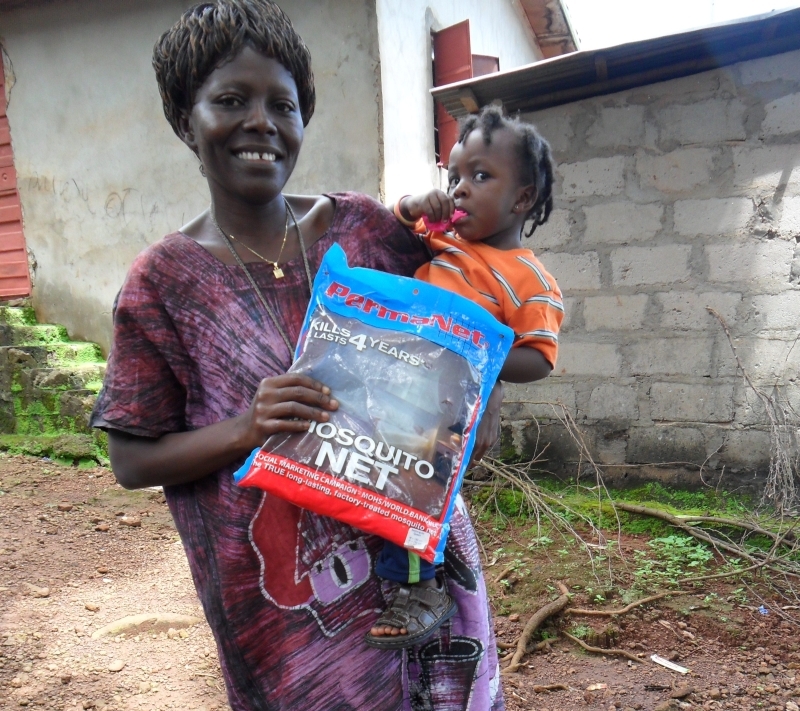Malaria affects the development of Africa
The need
Malaria is a leading cause of child deaths in Africa. According to the WHO, 70% of all malaria deaths are children under five. The Centers for Disease Control and Prevention lists malaria as the fifth cause of death from infectious diseases worldwide (after respiratory infections, HIV/AIDS, diarrheal diseases, and tuberculosis), but is the second leading cause of death from infectious diseases in Africa and the number one killer of children under the age of five.
Our solution
Develop Africa is working in concert with the WHO Global Technical Strategy for Malaria Prevention 2016-2030 – adopted by the World Health Assembly in May 2015. The Strategy sets ambitious but achievable global targets, including:
- Reducing malaria case incidence by at least 90% by 2030.
- Reducing malaria mortality rates by at least 90% by 2030.
- Eliminating malaria in at least 35 countries by 2030.
- Preventing a resurgence of malaria in all countries that are malaria-free.

Since a mosquito's primary point of attack is during the night when people are asleep, studies have shown that the use of insecticide-treated nets significantly reduces instances of mosquito bites. Many families, however, can’t afford these nets, so Develop Africa has been doing its small part to help kids, and their families, stay healthy through the distribution of insecticide-treated mosquito nets.
Long-lasting insecticidal nets (LLINs) are the preferred form of insecticide-treated mosquito nets (ITNs) for public health programs. In most settings, WHO recommends LLIN coverage for all people at risk of malaria. Develop Africa provides LLINs free of charge, providing equal access for all. In parallel, effective behavioral change communication strategies are required to ensure that all people at risk of malaria sleep under an LLIN every night, and that the net is properly maintained.
We are convinced that together we will one day see a world with no malaria. We are looking forward to this day and taking meaningful steps to get there, but need your help to make this goal a reality. You can be a part of the solution by giving today.
How can you help?
Contribute: Each net costs only $10. Click here to donate and choose how many you want to fund.
Key facts about malaria and malaria prevention:
- Malaria is a life-threatening disease caused by parasites that are transmitted to people through the bites of infected female Anopheles mosquitoes.
- In 2015, 91 countries and areas had ongoing malaria transmission.
- Malaria is preventable and curable, and increased efforts are dramatically reducing the malaria burden in many places. Malaria prevention is the solution to malaria.
- Between 2010 and 2015, malaria incidence among populations at risk (the rate of new cases) fell by 21% globally. In that same period, malaria mortality rates among populations at risk fell by 29% globally among all age groups, and by 35% among children under 5. Nevertheless, malaria remains a major killer of children five and under making preventive bed nets crucial.
- The WHO African Region carries a disproportionately high share of the global malaria burden. In 2015, the region was home to 90% of malaria cases and 92% of malaria deaths. WHO Fact Sheet 2017
- About 3.2 billion people – nearly half of the world's population – are at risk of malaria. In 2015, there were roughly 214 million malaria cases and an estimated 438 000 malaria deaths. Increased prevention and control measures have led to a 60% reduction in malaria mortality rates globally since 2000. Sub-Saharan Africa continues to carry a disproportionately high share of the global malaria burden. In 2015, the region was home to 89% of malaria cases and 91% of malaria deaths - WHO (November 2015).
- According to the CDC, malaria imposes substantial costs to individuals through the purchase of drugs for treating malaria at home, travel, treatment at dispensaries and clinics, lost days of work, absence from school, expenses for preventive measures, expenses for burial in case of deaths, and treatment maintenance. Malaria costs governments through supply and staffing of health facilities, purchase of drugs and supplies, public health interventions against malaria such as insecticide spraying or distribution of insecticide-treated bed nets; lost days of work with resulting loss of income, and lost opportunities for joint economic ventures and tourism. Although the cost lost in economic growth would increase the estimate; costs shouldered by individuals and communities are about US$ 12 billion per year.
Insecticide-treated mosquito nets
Long-lasting insecticidal nets (LLINs) are the preferred form of insecticide-treated mosquito nets (ITNs) for public health programs. In most settings, WHO recommends LLIN coverage for all people at risk of malaria. The most cost-effective way to achieve this is by providing LLINs free of charge, to ensure equal access for all. In parallel, effective behavior change communication strategies are required to ensure that all people at risk of malaria sleep under an LLIN every night, and that the net is properly maintained.
The bed nets that generous donors like you are helping to provide to families is one of the three key pillars to the goal of reducing malaria by 90%. Your donation is helping to take us one life at a time closer to this goal. These malaria nets are a proven way to prevent malaria. Thanks to your generosity, we are continuing to provide bed nets to families in need.
Malaria testing and antimalarial drugs
Ready access to malaria tests and medication will help prevent deaths from malaria. Rapid diagnostic tests (RDTs) show whether the child has been exposed to malaria by a positive or negative result. By proactively making available the recommended malaria tests and medication when needed, lives will be saved.
Antimalarial medicines can also be used to prevent malaria. For travelers, malaria can be prevented through chemoprophylaxis, which suppresses the blood stage of malaria infections, thereby preventing malaria disease. For pregnant women living in moderate-to-high transmission areas, WHO recommends intermittent preventive treatment with sulfadoxine-pyrimethamine, at each scheduled antenatal visit after the first trimester. Similarly, for infants living in high-transmission areas of Africa, 3 doses of intermittent preventive treatment with sulfadoxine-pyrimethamine are recommended, delivered alongside routine vaccinations.WHO Fact Sheet 2017
The long-term impact of the antimalarial strategy
A reduction in deaths by malaria will make it possible for more people, who would hitherto have died, to take part in growing their economy. Nets also eliminate the loss in productivity that happens when people fall sick. Families will also not need to divert scarce resources towards malaria medication, remedies, and hospitalization.




